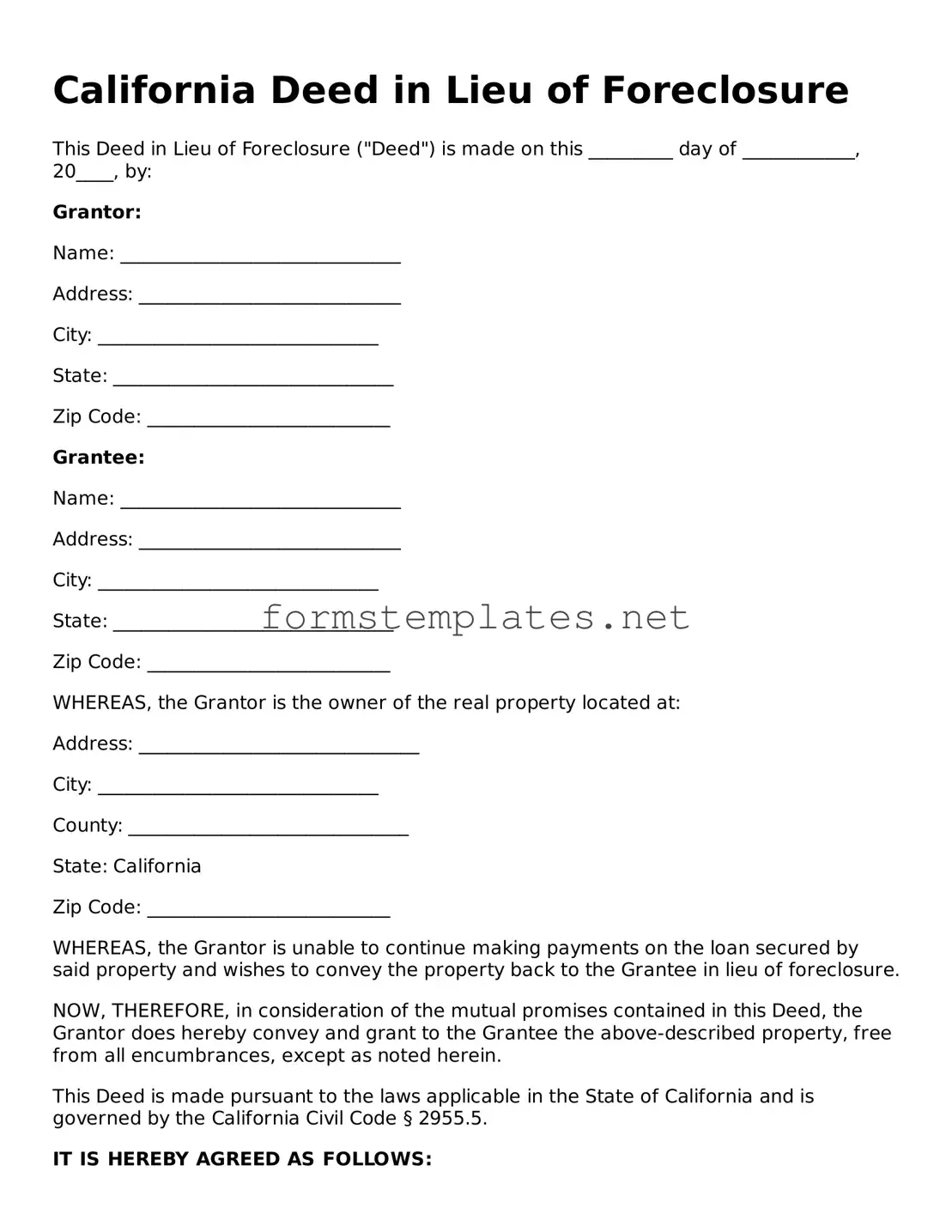California Deed in Lieu of Foreclosure
This Deed in Lieu of Foreclosure ("Deed") is made on this _________ day of ____________, 20____, by:
Grantor:
Name: ______________________________
Address: ____________________________
City: ______________________________
State: ______________________________
Zip Code: __________________________
Grantee:
Name: ______________________________
Address: ____________________________
City: ______________________________
State: ______________________________
Zip Code: __________________________
WHEREAS, the Grantor is the owner of the real property located at:
Address: ______________________________
City: ______________________________
County: ______________________________
State: California
Zip Code: __________________________
WHEREAS, the Grantor is unable to continue making payments on the loan secured by said property and wishes to convey the property back to the Grantee in lieu of foreclosure.
NOW, THEREFORE, in consideration of the mutual promises contained in this Deed, the Grantor does hereby convey and grant to the Grantee the above-described property, free from all encumbrances, except as noted herein.
This Deed is made pursuant to the laws applicable in the State of California and is governed by the California Civil Code § 2955.5.
IT IS HEREBY AGREED AS FOLLOWS:
- The Grantor hereby surrenders all rights, title, and interest in the property.
- The Grantee accepts the property in as-is condition.
- This Deed releases the Grantor from the obligation to repay the underlying loan.
IN WITNESS WHEREOF, the Grantor has executed this Deed on the day and year first above written.
______________________________
Grantor Signature
______________________________
Grantee Signature
ACKNOWLEDGMENT:
State of California, County of __________________
On this _________ day of ____________, 20____, before me, ______________________________, personally appeared ______________________________, who proved to me on the basis of satisfactory evidence to be the person(s) whose name(s) is/are subscribed to the within instrument and acknowledged to me that he/she/they executed the same in his/her/their authorized capacity(ies). I certify under penalty of perjury under the laws of the State of California that the foregoing paragraph is true and correct.
______________________________
Notary Public Signature
My commission expires: ______________
